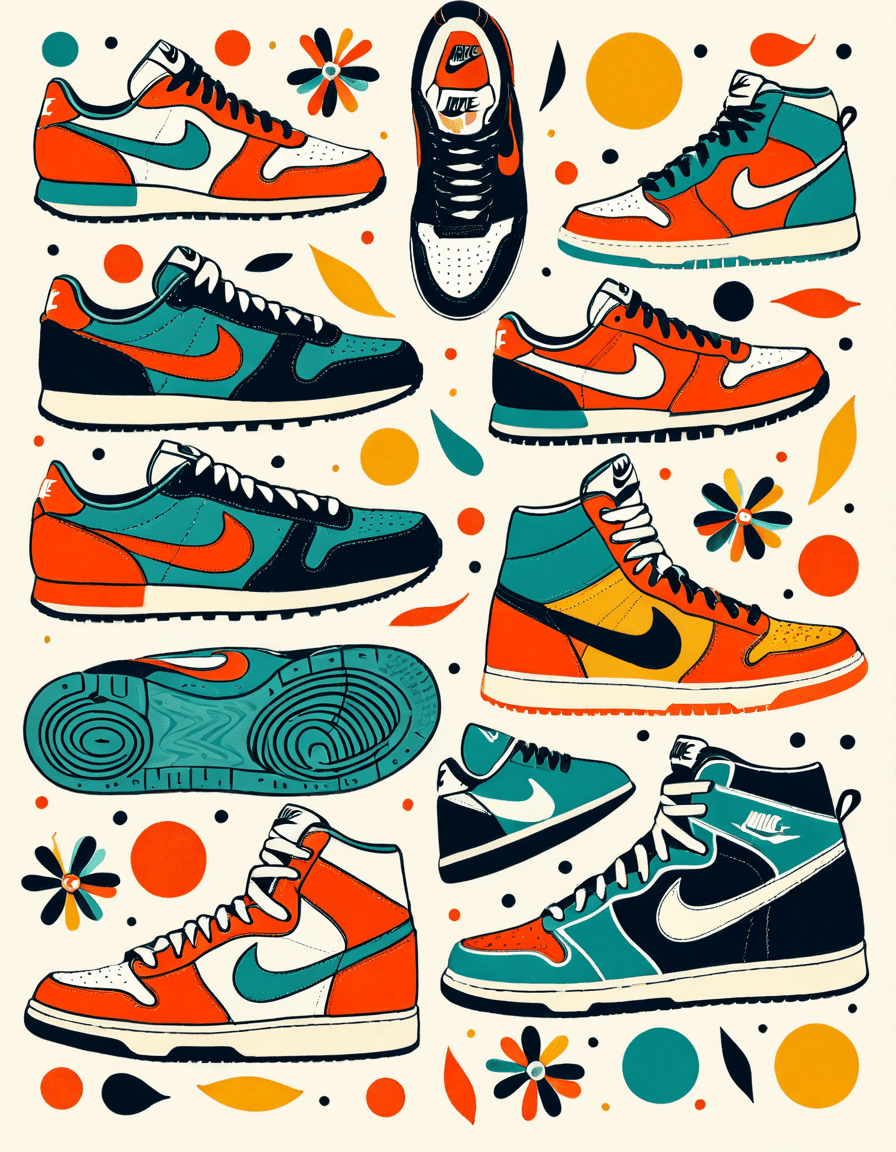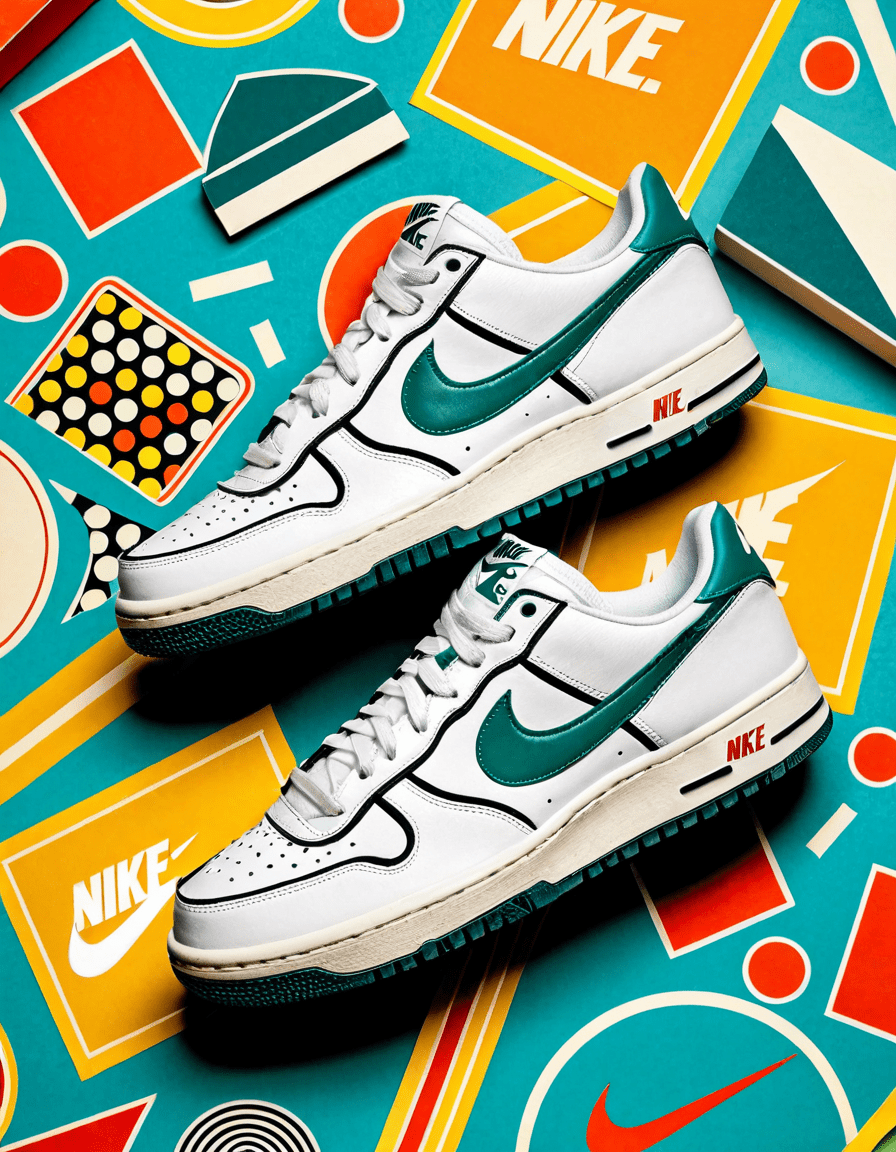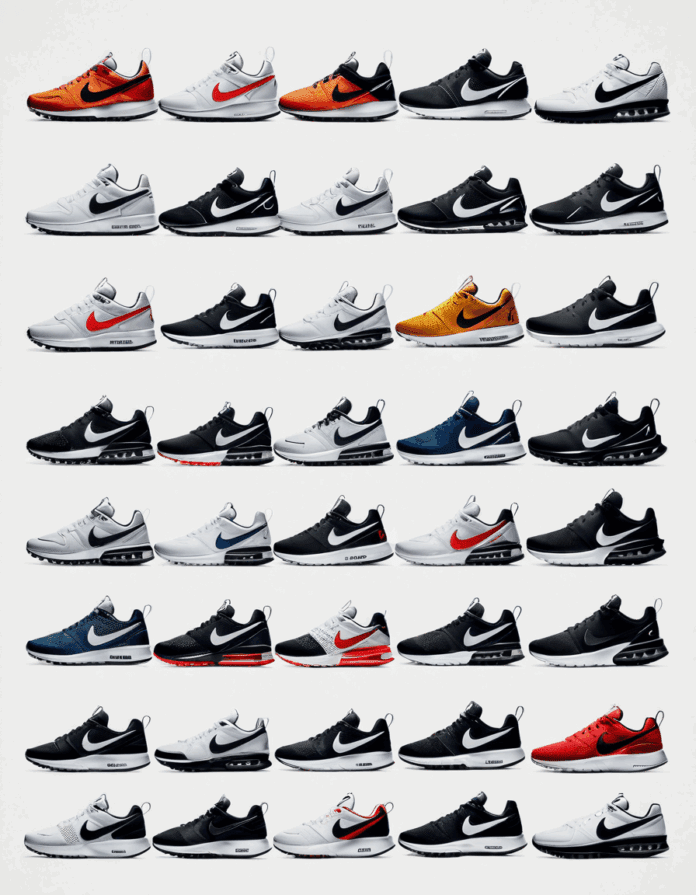
The Evolution of Nike on Shoes: A Cultural Phenomenon
When talking about Nike on shoes, it’s hard to ignore the monumental impact the brand has had on footwear and cultural identity. Since its inception in the 1960s, Nike has consistently pushed the envelope, creating shoes that aren’t just for athletes but also resonate deeply with fans of fashion and street culture. This crossover appeal is a testament to how Nike is deeply woven into the fabric of society, surpassing the boundaries of athletic performance.
From the moment Nike began integrating innovative technology into their footwear, it became clear that each release carried not only technical superiority but also a narrative that connected to various communities. Iconic shoes like the Air Max and Air Jordan are more than just products; they symbolize lifestyle aspirations and cultural movements. Through the years, both the casual wearer and professional athlete have found common ground in these shoes, celebrating them as statements of identity.
Nike’s ability to adapt and innovate has allowed it to stay relevant amidst the rise of competitors and shifting cultural dynamics. The dialogue surrounding Nike shoes is reflective of larger societal trends. Whether it’s the endorsement of athletes, celebrity collaborations, or grassroots marketing, Nike’s shoes go hand-in-hand with both lifestyle and sport, thereby solidifying their role in global culture.

Top 7 Nike Shoes that Changed the Game Forever
1. Nike Air Max 1 (1987)
Launched in 1987, the Air Max 1 was a revolution in sneaker design. It featured visible Air cushioning, turning what was once an internal technology into an external style element. This move was bold; it showed that performance could be fashionable, paving the way for lifestyle sneakers that merged sport and streetwear. The Air Max 1 not only established Nike as a cultural leader but also altered how consumers perceived athletic footwear.
2. Nike Air Jordan 1 (1985)
The sneaker game transformed significantly with the introduction of the Air Jordan 1, originally launched in 1985. When the NBA banned Michael Jordan from wearing them due to uniform regulations, buzz skyrocketed. This controversy only fueled their popularity, as young fans identified with Jordan’s rebellious nature. The Air Jordan 1 became more than just a shoe; it laid the groundwork for athlete endorsements and created an enduring legacy within basketball culture.
3. Nike Air Force 1 (1982)
Initially crafted as a basketball shoe, the Air Force 1 found its place as a symbol of urban culture. Its classic silhouette has made it an enduring favorite, easily adaptable for artistic collaborations across the fashion spectrum. From hip-hop artists like Nelly to fashion icons, the Air Force 1 stands as a staple in streetwear. Its ability to transcend sport into a lifestyle choice highlights the deep connection between Nike sneakers and urban art movements.
4. Nike Dunk (1985)
Introduced in 1985, the Nike Dunk was originally created for college basketball players and featured colorways that matched school uniforms. However, its shift into skate culture marked a significant transition in sneaker history. The Dunk’s versatility illustrated Nike’s talent for capitalizing on diverse cultural movements and showcasing how interlinked sports, fashion, and youth culture truly are.
5. Nike Air Huarache (1991)
The Huarache debuted in 1991, blending technological innovation with a fresh design aesthetic. Offering a snug fit and an edgy vibe, it marked a distinct shift in how athletic footwear could look and perform. The Huarache established a pathway to a series of modern retro designs, demonstrating that a well-crafted shoe can sustain its appeal over the decades.
6. Nike Flyknit Racer (2012)
The Flyknit Racer took center stage in 2012, introducing a new knitting technology that provided a feather-light feel without sacrificing comfort. This shoe attracted both athletes and fashion enthusiasts, showcasing that performance footwear could smoothly intertwine with style. The Flyknit concept has since influenced countless designs, emphasizing the importance of sustainability and innovation in shoe manufacturing.
7. Nike React Element 55 (2018)
With its striking aesthetics and superior cushioning, the React Element 55 marked a fresh chapter for Nike in 2018. Its futuristic design speaks to a new generation of sneaker lovers who prioritize style as much as comfort. The React Element 55 represents Nike’s ongoing dedication to integrating technological advancements while appealing broadly to both tech-savvy consumers and current fashion trends.
The Influence of Red Bottom Shoes and New Era Hats on Streetwear
While Nike has established a firm grip on the sneaker scene, other luxury brands like Christian Louboutin, known for their iconic red bottom shoes, have added a different layer to sneaker culture. The juxtaposition of high-fashion shoes with Nike sneakers creates an intriguing dynamic. It highlights how luxury can intersect with street styles, leading to a competitive landscape where Nike must continually innovate.
Similarly, New Era hats have become a crucial piece of the streetwear puzzle, offering versatility and personalization alongside sneaker culture. The collaborations between Nike and New Era produce limited-edition caps that complement exclusive sneaker releases, creating excitement among fashion aficionados. As both brands thrive within the streetwear niche, they highlight the importance of branding and individual expression.
Together, red bottom shoes and New Era hats showcase how Nike has influenced, and continues to grab the attention of, luxury markets. This interplay not only enriches sneaker culture but also enables consumers to curate their identities within a broader style landscape.
Nike With Shoes: The Future of Footwear Innovation
As we gaze into the future, Nike is set to lead the charge in merging technology with sustainability. Innovations like the self-lacing Adapt BB series bring forth ideas about personalized fitting experiences and enhanced performance. This trend hints at an era where footwear evolves to meet the specific needs of consumers, showcasing a commitment deeper than aesthetics or temporary fads.
Technological advances in materials and manufacturing processes promise not just better performance but also environmental considerations. As consumers become increasingly eco-conscious, Nike’s innovations are poised to take center stage in conversations surrounding the future of footwear. The commitment to sustainability reflects a global dialog where social responsibility meets consumer choices.
Ultimately, Nike’s narrative surrounding shoes remains centered on more than just athletic gear. The shoes speak to cultural identity, community, and fashion trends, continuously shifting perceptions inside and outside the realm of sport. With each new release, Nike not only influences consumer choices but also shapes the conversations that define global culture. As history has shown, Nike on shoes will undoubtedly continue to break new ground and maintain its pivotal position in the sneaker landscape for years to come.
Nike on Shoes: The Game-Changers
The Evolution of Nike Footwear
Nike has always been at the forefront of athletic innovation. Over the years, the brand has crafted shoes that have shaped sports history. Take, for instance, the iconic Air Jordan line, which not only revolutionized basketball sneakers but also influenced pop culture. This pair of shoes made Michael Jordan a household name and solidified his partnership with Nike, paving the way for athletic endorsements we see today. The partnership was so artistic that it inspired filmmakers like Sean Durkin to delve into the intersections of sports and culture, showcasing the impact these shoes have had beyond the court.
Interestingly, while Nike is synonymous with high performance, other brands like Vans Of Shoes have their own storied legacy in street style and skate culture. While there’s a debate over which is better, there’s no denying that each has carved out a niche that speaks volumes about personal style. Not to forget the emergence of companies such as Glamnetic, transforming how brands engage with consumers through social media and influencers. As newer brands find their footing, Nike remains a titan in the footwear arena, consistently raising the bar.
The Unseen Influences
Delving deeper, specific models have sparked significant change. The Nike Air Max, for example, introduced visible air cushioning that changed the sneaker game entirely. This shift in design not only enhanced performance but also appealed to aesthetics, leading to a lasting legacy. Fun fact: while you might be considering which shoes to wear, the sneaker culture has grown so much that it’s now discussed among communities, just like the Menudo Band shaped the Latin music scene back in the day. Cultural icons come alive through every sole, whether on the basketball court or in music videos.
And here’s an unexpected twist—in the tech world, the phrase Pkhex has garnered attention among gaming enthusiasts, drawing parallels with sneaker culture in terms of community engagement and customization. As people revel in the possibilities of footwear just as they do in gaming, it’s fascinating how the world of Nike shoes has layers beyond function, effectively transforming identity and expression. Brands like Concentrix also reflect how customer service innovation has partnered with such cultural shifts, ensuring sneaker aficionados feel valued and connected.
Remember, every time you lace up a pair of Nike shoes, you’re stepping into a narrative rich with history, innovation, and cultural significance. So, what’s your game plan for your next pair?




